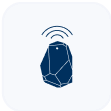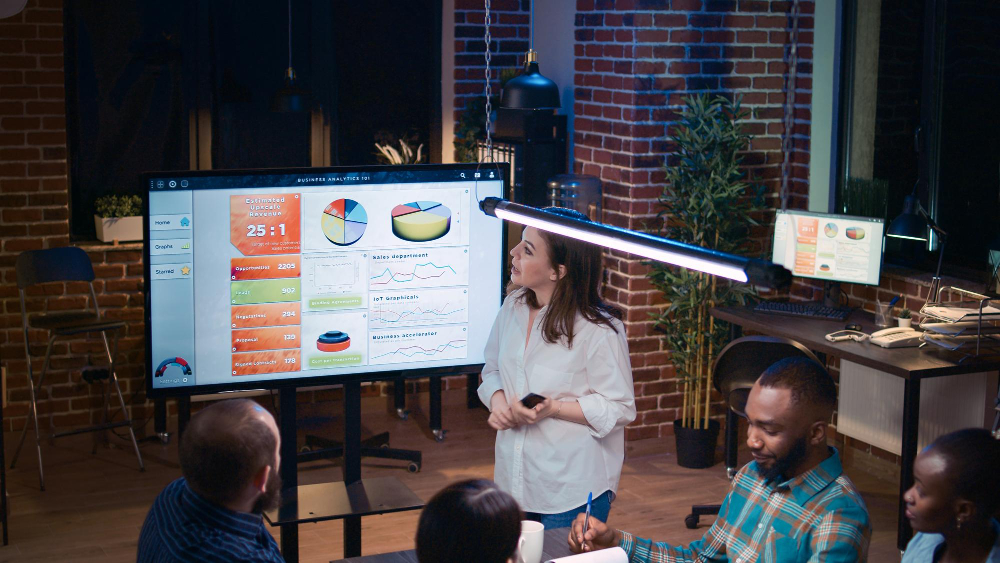
Complete Guide to Visitor Management Software Solutions
Businesses today want smooth operations and strong security. To make this happen, many are turning to visitor management software.
This software helps manage who enters a workplace, making check-ins faster and more secure. It’s an easy way to keep track of guests, protect staff, and improve the visitor experience.
In this article, we’ll look at what visitor management software does, how it works, and why it’s a valuable tool for businesses focused on security and efficiency.
What is Visitor Management Software?
Visitor management software helps businesses monitor everyone entering their facilities. Whether it’s customers, contractors, delivery personnel, or guests, this software makes the check-in process faster and more reliable.
Traditional paper sign-in sheets often create delays and inaccuracies. Visitor management systems replace these with automated tools that:
Log arrivals
Print visitor badges
Notify staff of guest arrivals.
Some systems even allow visitors to pre-register, letting them enter details in advance and speeding up their check-in.
These systems go beyond tracking visitors. They play an important role in security, allowing only authorized individuals to enter. Advanced features, such as ID scanners, background checks, and facial recognition, add another layer of protection.
Visitor management software also supports safety standards. During an emergency, administrators can quickly see who is on-site, helping to make evacuation or lockdown procedures more organized.
What Are The Key Features of a Visitor Management System?
A robust visitor management system includes a variety of features that boost security, simplify visitor tracking, and create a smoother experience for guests and staff.
Visitor Registration
Modern visitor management systems improve the visitor registration process by allowing check-in through:
QR codes
Touchless sign-in apps
Kiosks
With electronic check-in, visitors can complete the process quickly, replacing outdated paper logs.
This lets front desk staff focus on priority tasks, knowing that visitor details are recorded accurately in a digital system. By using an efficient digital method, businesses reduce entry wait times and improve the visitor experience.
Access Control
For effective entry control, access control integration is a valuable feature. By assigning distinct access credentials, businesses set up a secure path for each visitor. This keeps unauthorized areas off-limits while guiding guests to authorized zones.
With access credentials in place, companies create a safer workplace and minimize the risk of unintended access to restricted areas. This is especially important for businesses dealing with sensitive information or materials.
Visitor Screening
Visitor screening adds another layer of security by pre-screening visitors before they enter the premises. Many visitor management systems include tools for:
Background checks
Identity verification
Safety acknowledgment forms
Health screenings
This feature is especially useful for sectors like healthcare, government, or education, where safety protocols require extra checks. Visitor screening also supports businesses in managing large volumes of visitors without sacrificing security standards.
Cloud-Based Technology
Cloud-based visitor management systems offer flexibility and allow businesses to monitor visitor data from multiple sites at once. Cloud-based systems let companies do tasks, such as:
Monitor their entire network of locations
Adjust access as needed
Oversee operations from any location
By storing visitor information securely in the cloud, businesses access data quickly and track visitor flow in real-time. This scalability makes it ideal for companies with multiple branches or large facilities.
Visitor Badges & Branding
Custom visitor badges help with easy identification, creating a clear label for visitors. With a company’s logo, visitor names, and access permissions on badges, staff, and other visitors can recognize guests quickly. This feature also creates a positive impression by reinforcing the company’s brand presence. By displaying customized badges, companies combine both security and brand building in a single feature.
Automated Reporting & Analytics
Automated reporting and analytics are necessary tools for businesses looking to make informed decisions. Visitor management systems that include reporting options allow companies to:
Export visitor data
Track entry and exit patterns
Analyze visitor trends
These insights guide businesses in adjusting security measures, improving entry flow, and meeting compliance needs. Reporting tools also simplify audit processes by keeping an organized record of visitor activity, making it easier to review past data or address regulatory requests.
These key features make a leading visitor management system important for improving operational efficiency, strengthening security, and maintaining compliance.
Why Visitor Management Is Key for Business Security
When it comes to business data security, a strong visitor management system is necessary for preventing unauthorized access and protecting sensitive information.
1. Improving Security
A visitor management system is necessary for protecting businesses from unauthorized access by meticulously tracking visitors’ sign in. With real-time monitoring, businesses know who is on-site at any moment to prevent potential security breaches.
Integrating access control systems adds an additional layer of security, as it restricts visitor access to sensitive areas.
2. Visitor Screening
A robust visitor management system provides visitor screening to maintain safety and compliance. Before visitors arrive, systems can:
Monitor visitors
Conduct background checks
Verify identities
This is particularly useful for industries such as healthcare or government, where unauthorized access could lead to severe consequences. Screening allows businesses to confirm visitor information before granting access, ensuring visitors arrive safely.
3. Monitoring Visitor Activity
Tracking visitors from check-in to check-out is important for keeping a detailed log of movements on-site. A visitor management solution helps businesses monitor visitor activity in real time, offering insights into visitor patterns.
For industries dealing with sensitive information, such as healthcare, having a real time visibility into visitor activity keeps the visitor’s behavior aligned with company policies.
4. Legal Compliance
Maintaining legal compliance requires businesses to keep accurate visitor records. Visitor logs help businesses in:
Following local regulations on data retention
Avoiding liabilities
Providing audit-ready information
Accurate records of visitor interactions, such as visitor badges and visitor registration, are also valuable for legal needs.
5. Data Security
A visitor management system works to keep sensitive visitor data securely stored. Modern visitor management technology includes strong encryption protocols, assuring that visitor records are stored in a way that complies with data protection regulations like the GDPR.
Security personnel can access visitor data safely without compromising privacy, offering a digital solution that maintains the highest security standards.
Common Use Cases for Visitor Management Solutions
A visitor management system is versatile and adaptable, which makes it suitable for a wide variety of industries.
Each industry has specific needs when it comes to managing visitors, whether it’s for security, compliance, or improving the visitor experience.
Below are some of the most common use cases for visitor management solutions across different sectors.
Corporate Offices
Visitor management systems are necessary for managing the high volume of daily visitors, including clients, job candidates, and delivery personnel.
The ability to track and monitor visitor activity helps corporate offices maintain security while maintaining a smooth check-in process.
Clients and business partners: Many corporate offices deal with regular meetings with clients or business partners. A visitor management system allows for easy pre-registration, reducing wait times at the reception.
Job candidates: For HR departments, visitor management systems can hasten the process of handling job candidates. Visitors can check in via self-service kiosks or mobile apps, and the system can provide candidates with temporary access to interview rooms.
Delivery personnel: Frequent deliveries can sometimes disrupt the front desk’s efficiency. With a visitor management solution, delivery personnel can sign in quickly using a QR code or sign-in app, keeping the process organized and secure.
Healthcare Facilities
In healthcare environments, managing visitors is key to maintaining safety and compliance with health regulations.
Visitor management systems provides authorized personnel and visitors access to certain areas, helping protect patients and staff.
Visitor screening: Healthcare facilities often implement visitor screening protocols as part of their visitor management processes. This includes collecting health information, such as recent travel history or contact with infectious diseases.
Restricted access: For areas like intensive care units (ICU) or operating rooms, visitor management systems integrate with access control systems to restrict entry to authorized personnel. Visitors receive temporary badges with limited access based on the specific areas they can visit.
Compliance and safety protocols: Hospitals and clinics must comply with various safety and legal regulations. A visitor management solution helps maintain compliance by automatically recording visitor details and generating reports for audits or safety reviews.
Educational Institutions
Schools, colleges, and universities also benefit from visitor management technology. These environments often have high volumes of visitors, such as parents, contractors, and external staff.
Parent and guardian visits: Whether it’s for parent-teacher meetings or campus tours, visitor management systems quicken the check-in process for parents. Pre-registration options allow parents to sign in ahead of time, and visitor badges can be printed instantly upon arrival.
Contractors and maintenance workers: Educational institutions frequently work with external contractors for facility maintenance. By using a visitor management solution, schools can keep contractors logged in, tracked, and granted access only to the areas they need to service.
External staff: Schools often host external teaching staff or guest speakers. Visitor management systems keep these individuals registered and monitored during their time on campus.
Government Buildings
Government facilities handle sensitive information and must maintain tight security for visitors.
A visitor management system can improve security by integrating with advanced control systems, making sure that only authorized visitors are allowed into restricted areas.
Sensitive access: Government buildings often deal with classified information or sensitive meetings. A visitor management system can confirm that all visitors are screened before being granted access.
High-level security monitoring: Government buildings require high levels of security monitoring, and visitor management systems play a key role in this. Security personnel can monitor visitor activity in real-time, tracking movement throughout the facility.
Compliance with legal requirements: Government agencies often need to maintain strict visitor logs for audit and compliance purposes. The automated reporting and data collection capabilities of a visitor management system help to speed up this process, maintaining all visitor information accurately recorded and stored securely.
Comparing Visitor Management Systems vs Traditional Methods
Many organizations are transitioning from traditional visitor tracking methods, such as paper sign-in sheets, to more modern visitor management software.
Here is a comparison of visitor management systems and traditional methods to highlight the advantages of going digital:
Efficiency
Traditional visitor sign-in often relies on paper sheets where visitors manually fill in their information.
This method tends to be slow, especially during busy times, as each visitor must write out their details. Front-desk staff must manage these sheets, which takes time and can lead to delays.
Visitor management software automates this process. Visitors sign in using self-service kiosks, QR codes, or apps, reducing wait times and freeing up front-desk staff for other tasks. With digital records, staff no longer need to organize paper logs or manually enter data into a system.
Accuracy
Traditional visitor logs lack accuracy and can be messy or incomplete. Handwritten entries may be difficult to read or contain errors, making it hard to track who is on-site.
Over time, organizing paper records becomes a challenge, especially for businesses with high visitor volumes.
A visitor management system captures visitor data accurately, storing it in a digital format. This provides accurate record-keeping and easy access to information when needed.
Security
Security is a key concern when managing visitors. Traditional sign-in sheets offer limited security, as anyone can falsify information or gain access without proper identification.
Visitor management systems integrate with access control to improve security. Visitors receive temporary badges allowing them entry to specific areas, and their movements are monitored in real time. It creates a safer environment by keeping unauthorized visitors away from restricted spaces.
Cost Savings
While traditional methods may seem cheaper upfront, they come with hidden costs related to staff time and operational inefficiencies.
Front-desk staff often spend hours collecting, organizing, and inputting data from paper sheets into a digital format for reporting.
Visitor management software reduces these manual tasks, saving time and labor costs. The system automatically collects, stores, and organizes visitor data, allowing staff to focus on more valuable duties.
Make an Unforgettable Visitor Experience With Deskflex
DeskFlex’s visitor management system helps businesses manage guest check-ins efficiently while improving security. It simplifies the sign-in process by allowing visitors to register through kiosks or pre-register online. This reduces wait times and offers a smooth arrival experience.
The system provides real-time tracking of visitors, giving companies a clear view of who is on the premises at any moment. DeskFlex also integrates with access control systems, allowing only authorized individuals to enter secure areas.
Visitors can also receive temporary badges, and staff members are automatically notified upon their guest’s arrival.
DeskFlex’s solution supports compliance with safety protocols by maintaining a detailed visitor log. In emergencies, this information can be integral for managing evacuations easily.
Whether it’s a small office or a large enterprise, DeskFlex’s visitor management system scales to meet changing requirements, combining convenience, security, and compliance in one tool.
Book a demo with DeskFlex today and discover how it can meet your unique needs.
FAQs About Visitor Management Software
What is visitor management software?
Visitor management software is a digital tool designed to automate the process of tracking and managing visitors when they arrive at a business location. It replaces traditional sign-in methods, offering features like visitor registration, access control, and real-time monitoring to improve security.
What is an example of a visitor management system?
DeskFlex is an example of a visitor management system that provides a comprehensive solution, including pre-registration, touchless check-ins, real-time visitor tracking, and integration with access control systems to improve visitor experience.
How much does a visitor management system cost?
The cost of a visitor management system varies depending on the features and scalability required. Basic systems may start at a low monthly subscription, while more advanced systems with additional features like real-time tracking, access control integration, and cloud-based services will cost more.
What is a visitor management system?
A VMS (Visitor Management System) is a software platform used to manage, track, and monitor visitors at a business location. It automates the check-in process, screens visitors, and improves overall security by integrating features like visitor badges, real-time monitoring, and access control.



















































 Support
Support  Demo
Demo  Blog
Blog 


